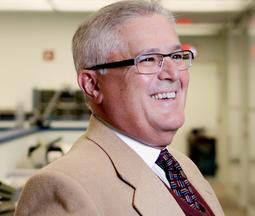 The return to school each fall is a time-honored ritual that — like so many other traditions and rituals that celebrate our religious beliefs, customs, cultural traditions or even the beginning of a new year — we use to mark our progress toward a better future.
The return to school each fall is a time-honored ritual that — like so many other traditions and rituals that celebrate our religious beliefs, customs, cultural traditions or even the beginning of a new year — we use to mark our progress toward a better future.
It is a tradition shared by parents, students and educators around the world, and it is one that many families and educators missed altogether last year.
And though students and teachers in most communities may be headed back to the classroom this year, the COVID-19 pandemic is still weighing heavy.
But if nothing else, the pandemic has reminded us of the importance of traditions and rituals like the return to school.
The Middles States Commissions on Elementary and Secondary Schools has upheld its standards and accreditation rituals for over 130 years, and for this past year and the one ahead of us, they have never been more important.
Internally, we are continuing to debate the relative importance of each of the 12 standards in order to ensure they reflect and meet the needs of the future.
For this year, however, the pandemic has made it clear that the priorities must be health and safety, educational programs and accountability, and student life.
Health and Safety
A return to school whether in person, virtually or both means our schools need to take the lead in fighting misinformation about the virus and the vaccine. Schools must encourage vaccinations, and in their absence, insist on the implementation of science-based recommendations about masks, social distancing and personal hygiene.
All schools must take the necessary steps to ensure proper ventilation, clean air and water so the opportunity exists for every child to have a safe place to learn. Unless our students and teachers feel safe, learning will not take place.
Educational Programs and Accountability
Schools must conduct a real assessment of what students have learned or failed to learn during this extended interruption of classes. Curriculums will need to be reviewed and adjusted to address learning gaps — large and small — if we are to avoid dooming students to future failure.
Learning is an interdependent sequence of knowledge and skills. Schools need to pause and remediate for the lost learning before moving on. It is more important that students learn what they need to know for future success than focusing on prescribed material that constitutes the traditional curriculum.
Student Life
Finally, student life activities and student services need to be redesigned and expanded to address the adjustment all students will face as they begin the path back to school and learning, back to sports and school activities, and back to regular personal lives.
Social and emotional learning will need to be integrated into academic and co-curricular programs whether offered in person or online to ensure that they provide students with the support they need as they acclimate to learning in a post-pandemic world.
The Path Back
We have all lost a great deal during the pandemic. Lost learning, lost experience and lost confidence in the safety of the world.
Schools have always been and will continue to be the path back as we recover and adapt.
This time around though it will take more imagination, a rethinking of what we do and a greater commitment to getting it done.
By focusing on our students’ health and safety first, adjusting our educational programs to meet their immediate academic needs and by attending to their social and emotional well-being we will get it done.
Our school communities need us now more than ever.
Welcome back!

